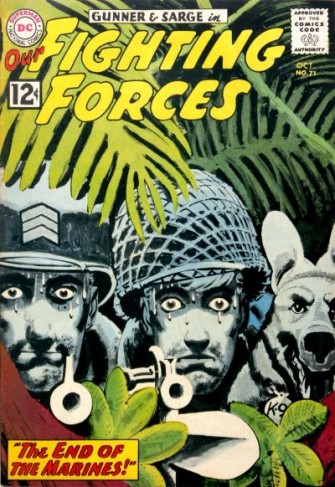 Home > News Story and Obituary Archive
Home > News Story and Obituary Archive Jerry Grandenetti, 1927-2010
posted September 29, 2010
Jerry Grandenetti, 1927-2010
posted September 29, 2010

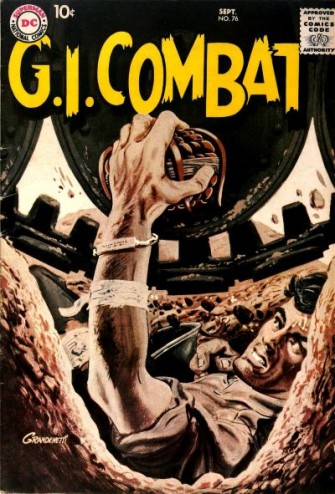
According to
multiple comics historians, the artist
Jerry Grandenetti passed away on February 19. An under-appreciated mainstream comic book industry workhorse and innovator, Grandenetti moved through a variety of styles that eventually put him at odds with the strict conventions of the field at a fallow time in its commercial and creative history. He was also one of the many comics industry artists that found purchase in advertising when work in comic books became less frequent.
Grandenetti was born in 1927 in Bronxville in Eastchester, New York. (Sources differ on date of birth; both 1925 and 1926 have been suggested as alternatives. As Grandenetti himself seemed to prefer 1927, I'll let him have it.) Although he admired illustrators such as Noel Sickles and Austin Briggs, Grandenetti focused on architectural drawing in school, which included a stint at New York's Pratt Institute. His experience in drafting led him to specialized service in the Navy during World War II, the apparent monotony of which drove him to doing cartoons for the base publication where he was assigned and gave him an appetite for attempting that kind of work full-time. As he explained
to an interviewer in 2006:
"I spent time with a company called C. C. Combs Landscape Architects and so the Navy gave me a special X rating and I ended up in the administration building doing these silly architectural corrections on porches and handball courts. With that special X rating I told the guy there, I forget his name, he was running the base paper and I wanted to do some drawings, so I started drawing for the base paper and that gave me the desire to want to draw for a living rather than doing this silly architectural stuff with triangles and T-squares and logarithms and all this other mathematical stuff that was boring as hell."
Seeking work in the fertile post-World War II comics industry, he eventually became an assistant to Will Eisner on
The Spirit. Grandenetti helped ink
The Spirit early on and eventually became its full ghost artist, providing pencils as well as sharing inks. He also concurrently began work in comic books. After a few freelance assignments including one for Eisner's own
Baseball Comics, Grandenetti scored his first series, "The Secret Files Of Dr. Drew," that ran in Avon's
Ranger Comics from 1949 to 1951. He also picked up work on the "Senorita Rio" feature from the same publisher.
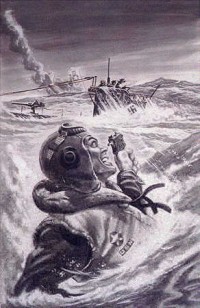
Starting in the 1950s, Grandenetti split time between a variety of publishers -- Gleason, Media, ACG, Prize -- before settling into a long run at DC Comics where he worked on a number of their popular western, crime, science fiction and war books:
Action,
Gang Busters,
Mr. District Attorney,
All Star Western,
Strange Adventures,
GI Combat,
Our Fighting Forces and
Star Spangled War Stories among them. He became an extremely valuable freelancer for longtime editor/writer Bob Kanigher, who appreciated the grittiness of his art and his displayed skill with both arresting cover imagery and executing them in a lovely-looking wash technique. It is believed that Grandenetti was the first to do that kind of art in commercial comic books, starting in 1956. The best of his interiors could be found in the "Gunner and Sarge" feature. Kanigher and Grandenetti co-created the character Mlle. Marie for
SSWS in 1959, another feature on which Grandenetti provided memorable interior art.
Perhaps the artist's most memorable drawing for DC gained fame through an alternative channel. Roy Lichtenstein's used an image from Grandenetti's 1962 cover for
All American Men Of War #89 as the basis for his 1962 painting "Jet Pilot."
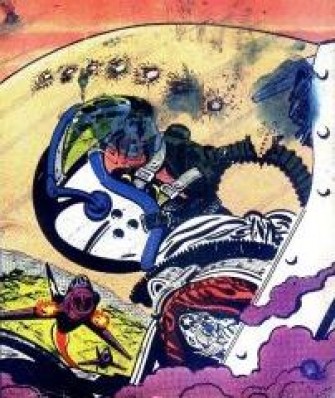
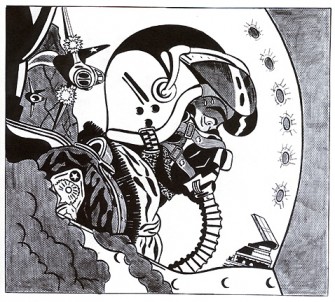
After a mid-1960s dalliance with a number of publishers including Tower, Marvel and Charlton, Grandenetti settled into the surging Warren Publishing and its black-and-white magazines as a gig to supplement the still-steady DC assignments. He started at Warren in 1966 ghosting for Joe Orlando, but soon moved to his fully credited stories that ran through 1972. The loose style that he developed for Warren's unique brand of stories and that was a natural extension of some his mainstream genre comics wash work was the envy of several other working artists, and is the source of admiration for many of his fans among comics historians. It was also extremely gratifying for the artist, according to
the 2006 interview:
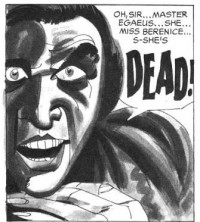
"... I began to realize what I liked was that the free rein [Jim Warren] gave all artists and that was when I really began to enjoy the comic book work that I was doing because prior to that I was kind of locked in because I got into the industry late and I was influenced by all these other great talents. Guys that were my age or maybe even younger and here I am trying to do a decent job and so when I was able to work with Jim Warren on his Creepy and Eerie books and having that freedom was what I enjoyed mostly. As I began to experiment and I began to do some of my best stuff."
While many see Grandenetti's experimentation as an extension of his work with and admiration for Will Eisner, it's also possible to see him as a forebear for the first generation of alternative comics cartoonist, who embraced the values of the best mainstream comic book art work and sought to employ those techniques for personal expression.
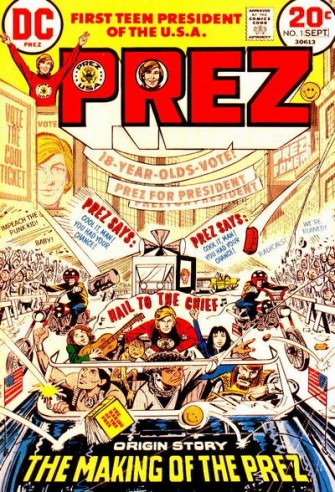
Continuing his work for DC, Grandenetti became valuable to that company reviving and extending the appeal of some of its supernatural characters such as The Phantom Stranger. He co-created another minor character during that run, the sword and sorcery hero Nightmaster in 1969. In the early 1970s, Grandenetti co-created a trio of concepts with Joe Simon. The most memorable was the bizarre, youth-as-president fantasy
Prez, which slipped into oblivion after only a few issues. The character has since made a few strange but well-received cameos and single appearances in the DC line. Grandenetti also provided art to The Outsiders and The Green Team: Boy Millionaires projects, which each ran for a single issue of
1st Issue Special.
Grandenetti would fulfill occasional freelance duties for DC through the mid-1980s. In 1990, Grandenetti found work as an art director at Young & Rubicam, springing into that second career based on decades of sideline business building a portfolio of illustrations for small agencies. Although he remained a favorite of those who enjoyed Silver Age comics art and the best of the Warren stable, and a surge of interest in Will Eisner's work included recognition for assistants like Grandenetti, the artist faded from view for many in comics. A web site, since shut down, featuring Grandenetti's art popped up in early 2009 (and may have been slightly older than that). His passing early this year went unnoticed until a daughter named Jennifer contacted the comics historian Bryan Stroud at the Silver Lantern web site about potential interest in her father's art. Word was passed along through a mailing list for those interested in that period of comics history until it came to the attention of comics industry news sources.
If born in 1927, Granedetti would have been 82 years old at the time of his passing.
